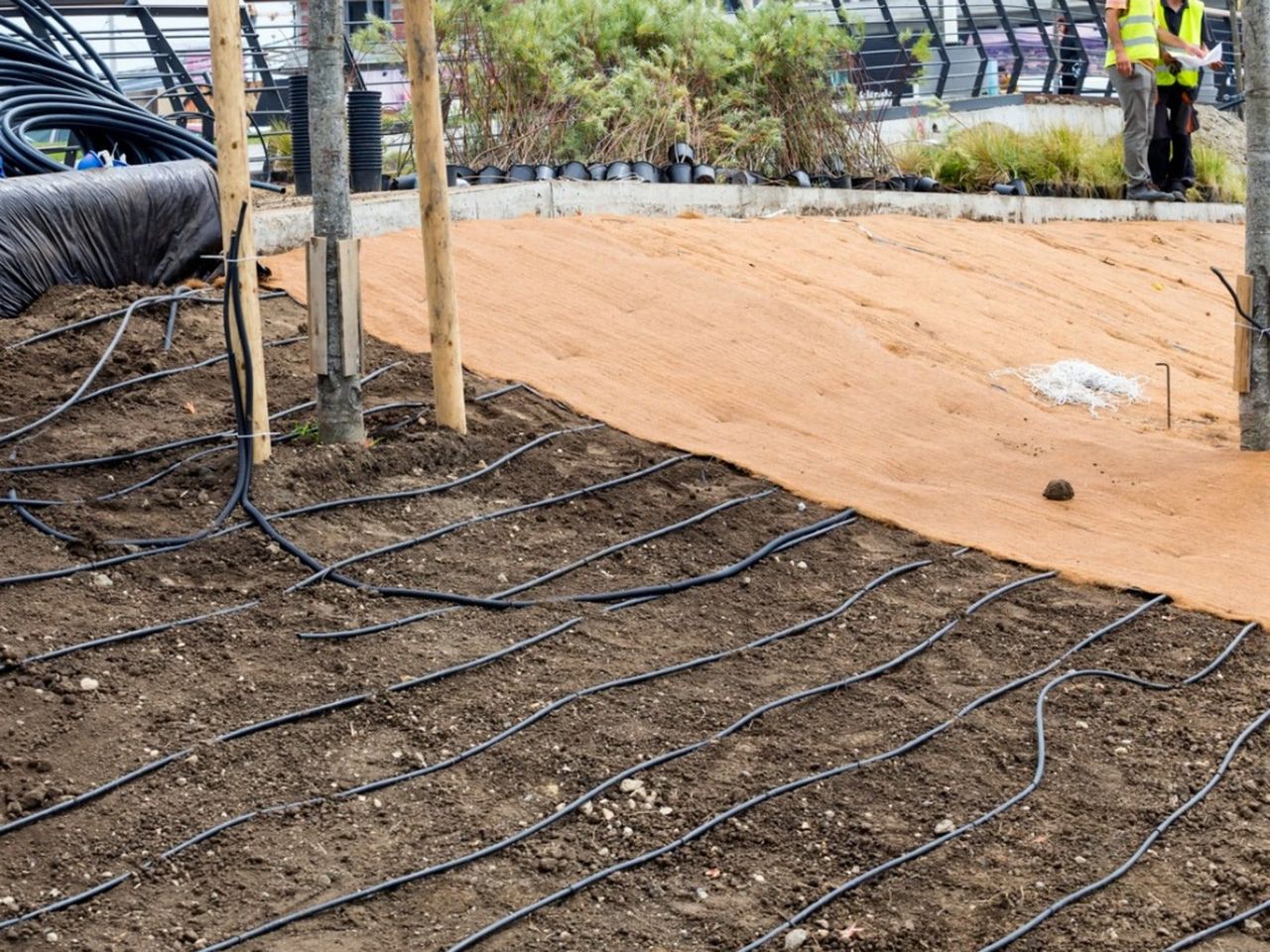Subsurface Drip Irrigation – The Most Sustainable Way To Water


In these days of drought, heat spells, and water wise gardens, many gardeners are interested in efficiency when it comes to irrigation. Drip irrigation is commonly considered to be the most efficient way to water plants. But there’s something even better now: subsurface drip irrigation. It’s one step up - or, rather, one step down, providing low pressure water directly to each plant’s roots beneath the soil.
Underground Drip Irrigation
Subsurface drip irrigation - known as SDI - is an irrigation system that places a dripline of polyethylene tubing under the soil to release water to a plant’s root zone. Why is this good? The primary advantage of SDI is that the gardener is able to manage root zone irrigation more precisely. That means less evaporation loss and the possibility to spoon-feed nutrients.
An underground drip irrigation system also permits underground watering in fields that are shaped irregularly. In addition, it lets the gardener to meet the different water needs of different soils and crops.
How SDIs Work
The basic structure of an underground irrigation system is the dripline, buried in the soil. It must be placed below aeration depth, at least 6 to 12 inches below grade. An SDI dripline will have small holes called emitters spaced evenly along its length. The pressure of the water inside the tubing forces water out of the emitters drop by drop. Spacing between emitters depends on the type of soil and how it holds water.
The amount of water is regulated by the thickness of the dripline and the intervals of the emitters, usually placed every 8 to 24 inches (20-60 cm). You determine the appropriate spacing between by the soil’s water holding capacity.
The soil surface itself stays dry with subsurface drip irrigation, which means that neither the heat of the sun nor the wind will cause water loss. An SDI system that is properly installed, maintained and managed will be the most efficient irrigation system currently available.
Subsurface Drip Irrigation for Lawns
Subsurface irrigation systems are regularly used for agricultural crops, like corn, but what about plantings in a home landscape? Studies suggest that underground irrigation systems can work very well for turfgrass, one of the primary water guzzlers in American homes.
Gardening tips, videos, info and more delivered right to your inbox!
Sign up for the Gardening Know How newsletter today and receive a free copy of our e-book "How to Grow Delicious Tomatoes".
Every homeowner is well aware that their lush green lawn uses much more than its fair share of water. This is equally true for the grass on sports fields and golf courses. Installing an underground drip irrigation system can cut down on water use.
But note that this won’t be a great idea for renters. The SDI infrastructure is considered permanent, placed in the soil and used in place for years, even decades if properly maintained. Given the relatively high cost of the system, subsurface drip irrigation may not be economical to install for rented or leased residences.
Installation of SDI for Lawns
If you are wondering how to install subsurface drip irrigation for lawns, the best tip is to call in the specialists. In order to properly install a subsurface irrigation system, you need both specialized equipment and know-how.
Hiring a profession is expensive, but proper installation is critical to the effectiveness of the system. And there are many different steps to keep in mind that a DIY homeowner might miss, including calculating appropriate diameter of the dripline, distance between emitters, and proper procedures.
For example, you have to run water through the driplines very quickly after installing them. This is done to fully open the flow path to the soil. Failing this, soil can consolidate around the collapsed driplines, limiting water flow. And while installation is fairly quick in soil without rocks, rocky soil can make installation extremely difficult.

Teo Spengler is a master gardener and a docent at the San Francisco Botanical Garden, where she hosts public tours. She has studied horticulture and written about nature, trees, plants, and gardening for more than two decades. Her extended family includes some 30 houseplants and hundreds of outdoor plants, including 250 trees, which are her main passion. Spengler currently splits her life between San Francisco and the French Basque Country, though she was raised in Alaska, giving her experience of gardening in a range of climates.